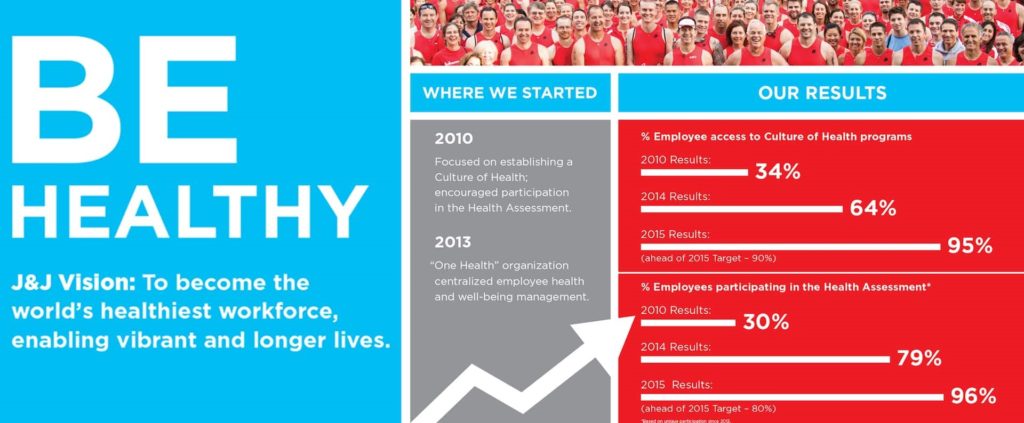Lamplighter programme
Our Lamplighter employee programme was started more than a decade ago to improve nutrition, fitness and mental resilience of employees. A dedicated Medical & Occupational Health (M&OH) team along with the Human Resource (HR) department of the company has strategically developed this programme to address the wide-ranging health risks in employees of the company.
Project
Related links
As part of the programme, employees are assigned colour codes based on their health check-up where green signifies good health, amber denotes the need for the improvement and red alarms the need for tracking major health improvement.
This was achieved through targeted individual health improvement plans which were tracked very closely. We ran several programmes for habit change and using the latest technology, we measured the direct impact (steps taken, calorie intake, water intake etc) and indirect impact (BMI/BP/Sugar etc) of the programmes. Our mental health programme through the ‘ReachOut’ helpline included tele-counselling and face-to-face counselling in required cases and is available for our employees and families. We provided grief counselling and support as needed. We engaged with employees to seek mental health support and educated them about the benefits of good mental health.
Additionally, India was the first Unilever country to go live and launch the LMMH (Line Manager Mental Health) – ‘Survive to Thrive’ module for addressing workplace stress. This was supported by engaging events and expert talks across our factories and offices. We also ran a workplace stress survey and celebrated International Yoga Day 2018 across locations.
Impact
Our ‘Survive to Thrive’ wellbeing activations touched over 10,000 employees across locations with a key message of embracing #Selfcare. In 2018, we significantly reduced the number of employees in red by 3.1% compared to 8.2% in the previous year.
Synopsis: The lamplighter program has been a flagship initiative by HUL to help their employees stay health. This case study is a good read on how they carried it out and sets a good example for other organizations.
Name:
Johnson & Johnson’s Health and Wellness Program
Author/Source: Johnson & Johnson’s
Link:http://www.icmrindia.org/free%20resources/casestudies/Johnson%20&%20Johnson-Health%20&%20Wellness%20Program1.htm
Body:

“Top management is recognizing physical fitness as a prudent investment in the health, vigor, morale and longevity of the men and women who are any company’s most valuable asset.”
Dr. Richard Keller, Ex-President of the Association for Fitness in Business1.
“We believe our Health & Wellness Program can continue to achieve long-term health improvements in our employee population.”
Dr. Fikry Isaac, Director, Johnson & Johnson, Occupational Medicine, Health & Productivity2.
In 2000, the New Jersey Psychological Association presented J&J with the Psychologically Healthy Workplace Award for its commitment to workplace well-being and developing a psychologically healthy work environment for its employees. According to analysts, these prestigious awards were given to J&J in recognition for its continuous efforts to create a healthy work environment. The company not only offered employee assistance programs and benefits packages but also introduced several family-friendly policies and offered excellent professional development opportunities to its employees. All this was done under the Health and Wellness Program (HWP) that the company introduced in 1995. The program benefited both J&J and its employees. The company saved $8.5 million per annum in the form of reduced employee medical claims and administrative savings.
Moreover, within two years of implementing HWP, J&J witnessed a decline of 15% in employee absenteeism rate. Peter Soderberg, President, J&J explained the rationale behind implementing the program7, “Our research time and time again confirms the benefits of healthier, fitter employees.
They have fewer and lower long-term medical claims, they are absent less, their disability costs are lower and their perceived personal productivity and job/life satisfaction levels are higher.”
Ron Z. Goetzel (Goetzel), Vice-President, Consulting and Applied Research, MEDSTAT Group8 added, “There’s a growing body of data indicating that corporate wellness programs lower medical costs for employees.”9
Background Note
The US industry spent approximately $200 bn per annum on employee health insurance claims, on-site accidents, burn-out and absenteeism, lower productivity and decreased employee morale due to health problems. Moreover, according to the estimates of Mercer10, the US industry expenditure on the medical and disability bills of employees was rising significantly. In 1998, companies had paid an estimated $4000 per annum per employee as healthcare costs, and that rose to $5,162 in 2001 and around $5,700 in 2002.
Apart from other health related problems (Refer Table I), stress at workplace was considered to be one of the main reasons for this high expenditure. Work stress led to problems like nervousness, tension, anxiety, loss of patience, inefficiency in work and even chronic diseases like cardiac arrest and hypertension. As a result of these health problems, absenteeism increased and productivity of employees declined.

In
1997, the Whirlpool Foundation11, the Working Mother magazine12 and the Work and Family Newsbrief13 carried out a survey in the US, which
involved about 150 executives.
The survey discovered a close connection between employee wellness programs14
(which included flexi work options, employee care, employee assistance
programs) with 16 key result areas including enhanced efficiency, low
absenteeism, low turnover, high employee satisfaction, high morale and reduced
health-care costs of employees. This signified that a company which had a good
health and wellness program had to offer less in terms of monetary assistance
to its employees. Elaborating the benefits of these programs, DW Edington,15
Professor at the University of Michigan said16, “Wellness programs in
general, and fitness programs in particular may be the only employee benefits
which pay money back.
When more people come to work, you don’t need to pay overtime or temporary help; when people stay at the job longer, training costs go down; lower health care claims cost you less if you’re self-insured and health care insurers as well as some companies are already beginning to create premiums based on fitness levels.”
In the late 1990s, with the rising awareness about the link between the employees’ health and an organizations’ productivity, more and more companies in the US started offering health and wellness programs for their employees. According to a study conducted by Hewitt Associates17 in 2001 (involving 945 major corporations), around 93% of the corporations offered HWPs compared to 89% in 1996. The survey discovered a close connection between employee wellness programs14 (which included flexi work options, employee care, employee assistance programs) with 16 key result areas including enhanced efficiency, low absenteeism, low turnover, high employee satisfaction, high morale and reduced health-care costs of employees. This signified that a company which had a good health and wellness program had to offer less in terms of monetary assistance to its employees. Elaborating the benefits of these programs, DW Edington,15 Professor at the University of Michigan said16, “Wellness programs in general, and fitness programs in particular may be the only employee benefits which pay money back. Explaining the development, Camille Haltom (Haltom), a health care consultant with Hewitt Associates explained18, “Because employers are under increased cost pressures, there is a renewed interest and excitement about health promotion and medical management programs that can provide cost savings, reduce absenteeism and increase productivity.” Major companies in the US reaped substantial benefits by implementing WPs (Refer Exhibit II). PepsiCo19 invested $2 million in a fitness center and realized a return of three times the money it invested. Similarly, Dupont introduced a program, ‘Health Horizons’20 and realized savings of five times the money it invested.
Tenneco21 which invested a sum of $11 million to start a fitness centre, spreading over a total area of 25,000 square feet in Houston found that the annual medical claims of employees who participated in its fitness program, decreased by about half. General Electric was able to cut down its health care costs by 38% in one-and-a-half years by introducing a wellness program for its employees.
The employees who did not participate in the program witnessed an average increase of 21% in health care costs. A study conducted by the Mutual Benefit Life Insurance Company, New Jersey, revealed that the employees who participated in health programs had medical claims that were, on an average, 70% less than that of non-participants.
Haltom said22, “We expect that organizations will not only continue to offer health promotion programs but look for ways to enhance and expand existing programs for employees.” In order to protect and promote the health and well-being of its employees and their families, J&J also introduced its HWP in 1995. Though several organizations in the US had introduced HWPs earlier, the manner in which J&J implemented it was unique and resulted in significant benefits for the company.
The Health and Wellness Program
Since its inception, J&J had laid special emphasis on providing proper care to its employees (Refer Exhibit III). The company had mentioned its responsibilities towards employees in its credo (Refer Exhibit IV). J&J hired medical professionals who provided health services to employees, their spouses and children. The company established medical clinics at their plants and offices, where experts performed medical evaluations and offered vaccination facilities. They also offered advice on subjects like nutrition, family planning, dysentery prevention and smoking cessation. J&J’s medical staff also maintained a cafeteria at some of the company’s plants to ensure safe and nutritious meals for its employees.
As a part of its HWP, J&J conducted a health-risk assessment of its employees. The assessment carried out by J&J revealed that its employees were prone to risks in three areas, namely, high cholesterol, hypertension and other problems related to a sedentary work life. As a first step in its HWP, the company started offering regular counseling and exercise programs for its employees.
This helped the employees to keep their cholesterol levels and hypertension under check and also control their weight. The final data obtained from the health-risk assessment enabled the health care group to tailor the HWP according to the needs of its employees. In the first year of its introduction, only 26% of J&J’s employees opted for health-risk assessment.
Explaining the reason for the poor response, Patricia Flynn (Flynn), Vice-President, J&J’s Health Care System, said23, “People think they are fit and might not want to bother with an assessment.” To encourage more employees to opt for health appraisal, J&J offered $500 discount on their medical insurance costs. This plan worked well and by 1999, employee participation increased to 93%. Elaborating on it, Jennifer Bruno (Bruno), Director, Health and Wellness Business Planning, J&J said24, “A large part of how we’ve been able to achieve this success is by giving incentives to employees on the completion of a health risk profile. We offer employees a $500 discount on their medical insurance costs if they are willing to take the health profile, and it’s worked very well. We saw participation rates for completion of the health profile jump from less than 26% without incentive, to over 93% with it. We are confident that once employees know what their risks are, then we can make a positive impact on their health.” Later, the health-risk assessment was conducted in a secretive manner by a third-party administrator to maintain the employees’ privacy, as it was considered to be one of the main reasons for the non-participation of employees. Employees also expressed fears that the assessment results might be used by the top management while making retrenchment decisions. Flynn explained25, “The information gathered is only shown in aggregate to management, while the employees get individual reports on their risk status. Employees can also check an optional box on the assessment to be contacted with information regarding any disease they are at risk for. So many of them checked the box the first year that tells me their privacy fears were alleviated.” J&J’s HWP included the employee assistance program, disability management program, the ergonomics injury prevention program and the Safe Fleet Program.
Author/Source: Johnson & Johnson’s





